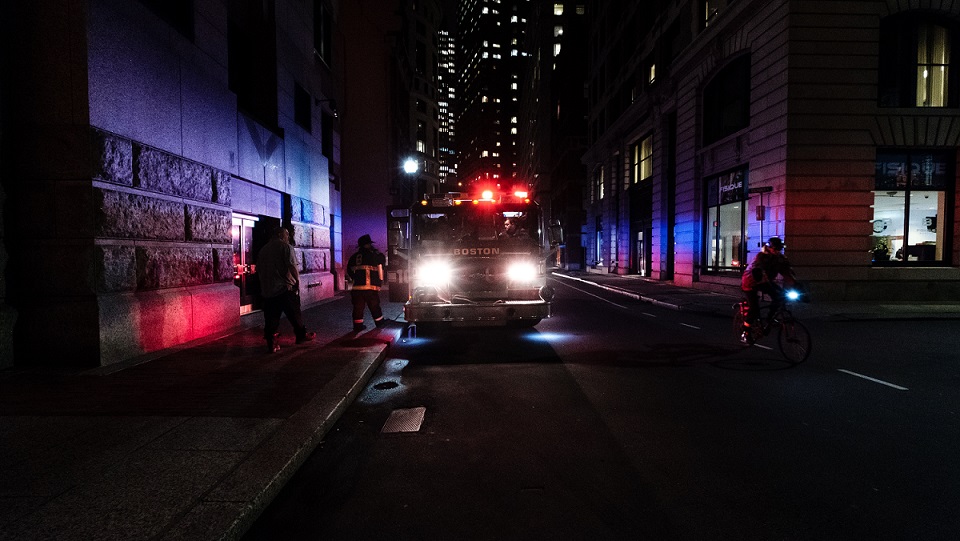
In the past several weeks the News has been littered with reports on the impact from Hurricanes, flooding, and earthquakes. And coincidently (or maybe not!), September is “National Preparedness Month” in the United States, during which government leaders at every level encourage every citizen to personally prepare for such events.
Consistent with these factors, every year during September I try to encourage readers to set aside time to plan for those emergencies that - hopefully – will never happen. Even so, since it is a national initiative; it will bode well for each of us to at least consider this topic and to seek to become part of the solution – rather than add to the challenges – in the event that we are faced with an emergency situation.
In disaster preparedness, the saying is, “The first 72 is on you,” meaning that in the first 72 hours following a disaster, residents should be able to take care of themselves - unless, of course, they are injured. This year, the recommendation has been extended to encourage every household to prepare to survive for at least two weeks without assistance from authorities.
With that in mind, this week and next I will provide 10 questions – 5 each week - to assess our level of personal preparedness. The idea is to develop a “score sheet” that can then be converted into an action plan to upgrade our personal level of readiness.
Check these next 5 questions (5 more next week):
1. Do we have a personal emergency plan?
We should have a plan specific to the emergency scenarios that are likely to impact our region. For some areas, flooding is a concern; for others, it could be an earthquake; for all of us, it is preparation for terrorist and/or active shooter scenarios. We can ask ourselves, “Do we have a plan for communicating with our family members, sheltering in place, supplies in our car(s0 if we are away from our home, and – if necessary - leaving our home on short or no-notice?
2. Do we have a two-week supply of non-perishable food at home so that we are able to survive without electricity if the local or regional power grid is disrupted?
“Trail mix,” high-calorie nutrition bars, canned chicken, canned fruit, canned -- anything that is ready to eat without the need to be heated/cooked and that is easy to open without power. It is also a good idea to develop a strategy to rotate these items so that they remain fresh (consult the expiration dates on packaging).
3. Do we have at least one gallon of water per day for each family member that will last at least three days?
For most people, if power is lost, the ability to turn on the faucet and have water available is compromised – and/or the public water source may have become contaminated and unsafe to drink. The recommended minimum is one gallon per person per day – add more if cooking is included (outdoor barbeque?) and bathing is in the plan.
4. Do we have cash on hand, mostly in small bills - $1, $5, $10 – to use for acquiring supplies that we don’t have or in the event that we run out of something vital to our personal well-being.
Based on the nature of the event, banks and ATM’s, and credit-card or other electronic charging systems may not function for a period of time. In such an event, having cash on hand would be good preparation to make basic purchases.
5. Do we have a well-thought-through “Go Bag” assembled and ready for no-notice departure in the event that we need – or are required - to leave home quickly (for an unknown duration)? – possibly longer than a couple days.
FEMA recommends this bag includes water, food, battery-powered or hand-crank radio, hand-crank flashlight, batteries, a first aid kit, a filter mask, whistle, a manual can opener, duct tape with plastic sheeting, garbage bags and ties, and any family-specific needs (prescription meds, pet food/supplies, infant formula/diapers, and important family identification documents). My personal plan is that I keep these items in my car in a small backpack with a change of shoes for walking distances if needed. Alternately we could utilize a duffle bag or a 5-gallon bucket.
By providing this information my goal is to participate in the Nation’s “Preparedness Month” activity in order to be prepared to care for ourselves and our loved ones for several days or weeks until the local and regional authorities can implement a recovery plan.
Next week I will provide the second 5 elements of the check list for this purpose. Stay tuned – and let’s respond to the encouragement from our government leaders to get prepared!
Photo Credit: Osman Rana
